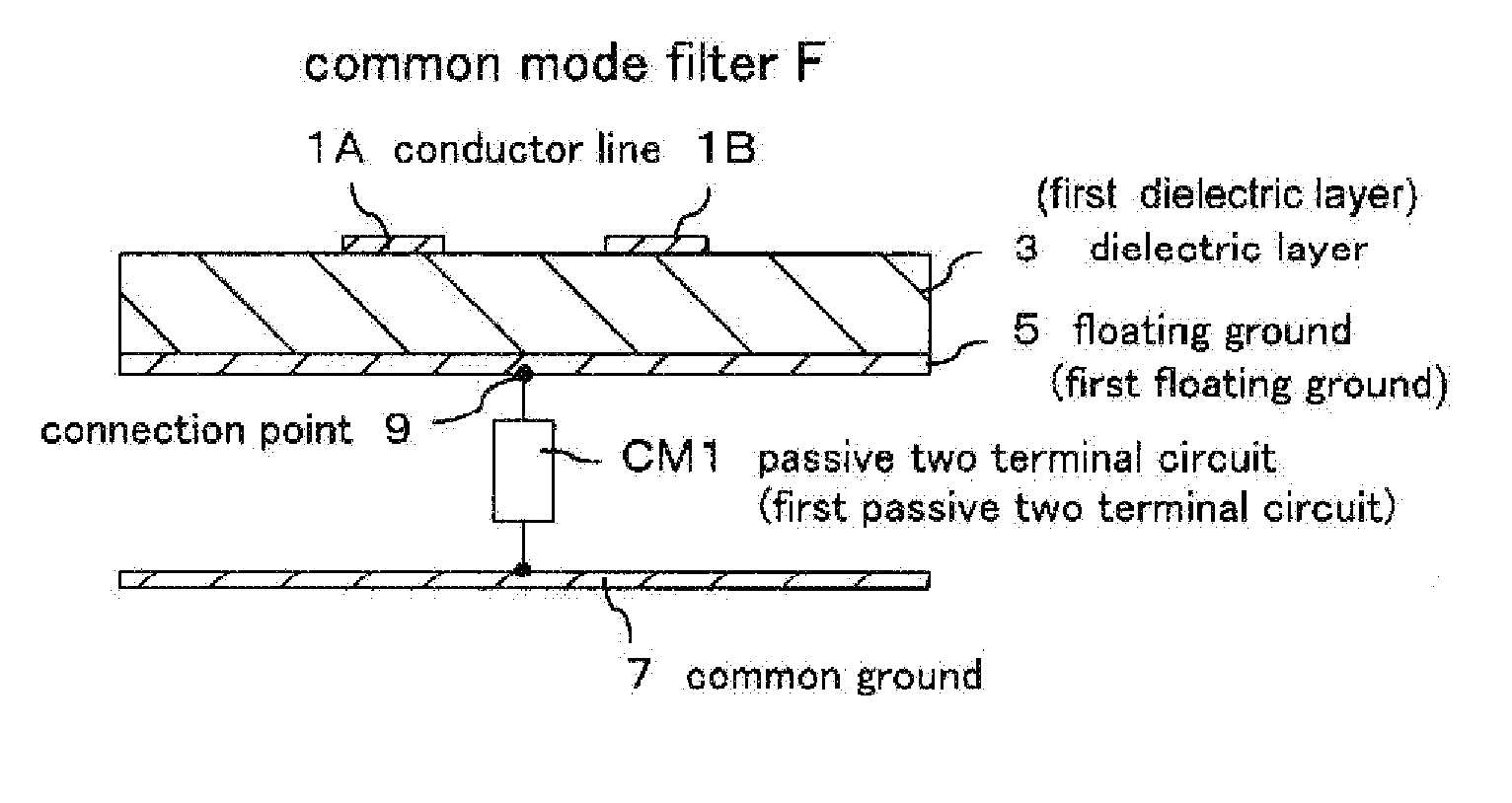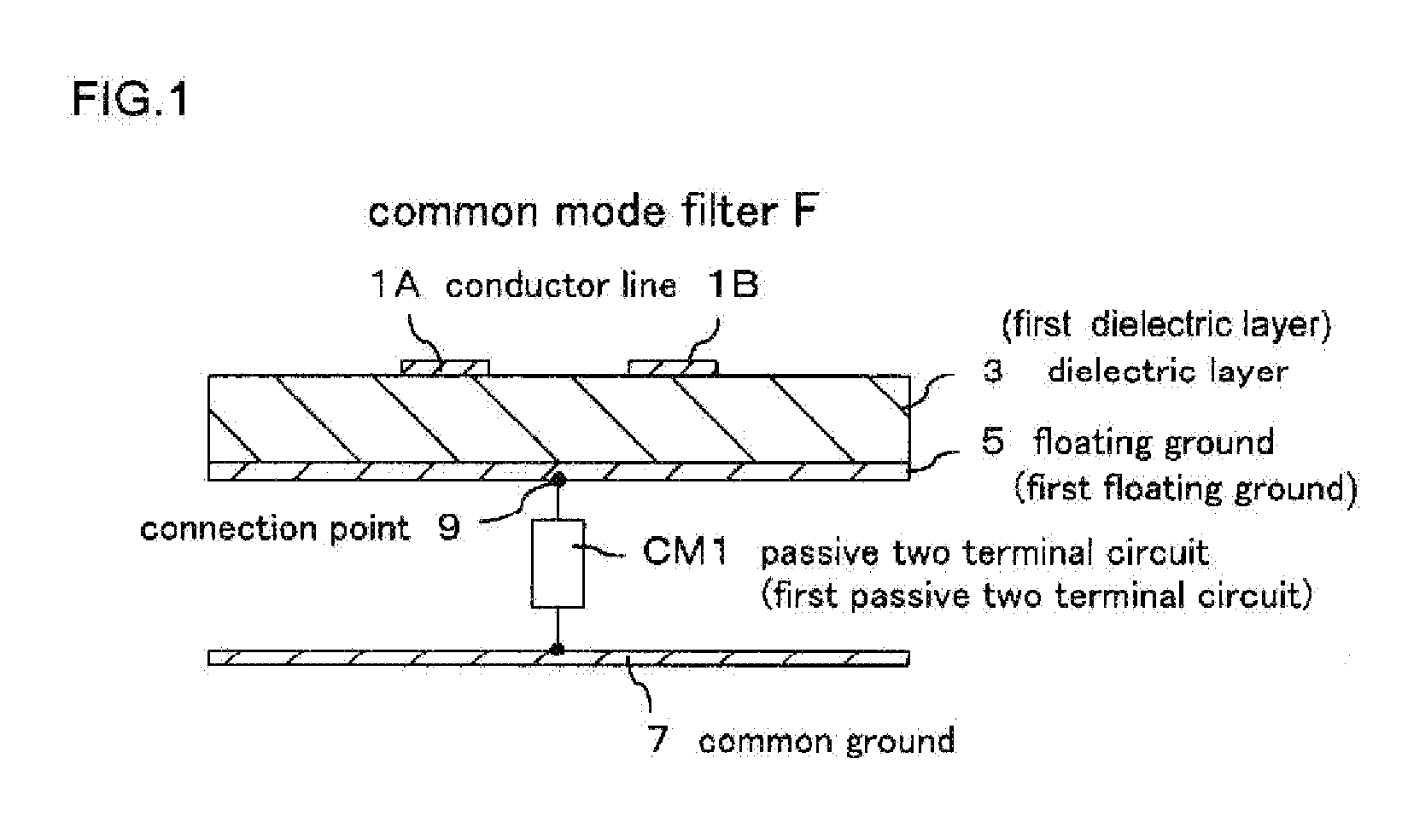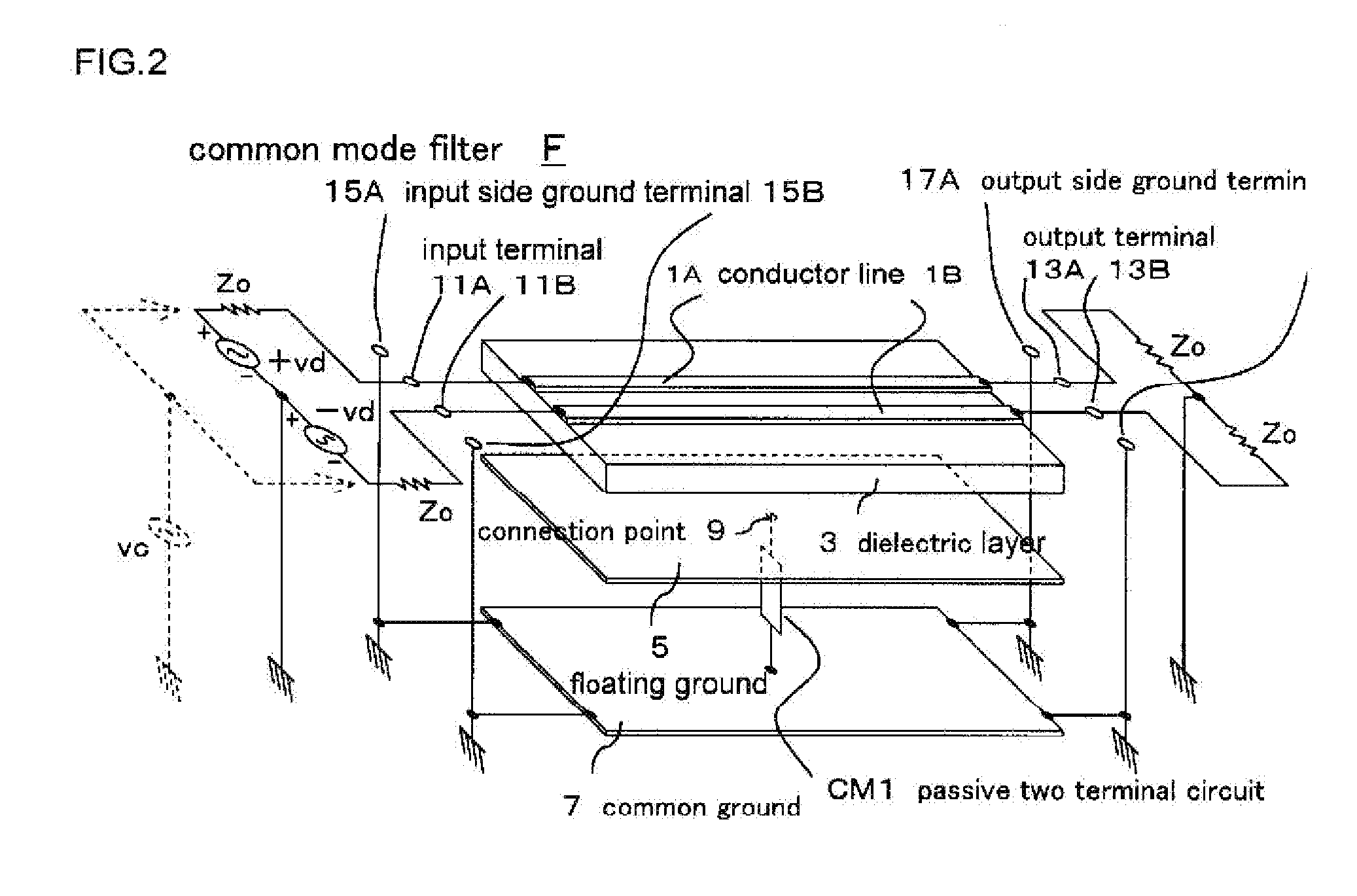Common mode filter
a filter and common mode technology, applied in the field of common mode filters, can solve the problems of deteriorating the noise resistance property, increasing the impedance of two conducting wires, and insufficient attenuation function of common mode signals such as external noise, so as to achieve excellent transmission, easy to obtain planar structure, and sufficiently attenuation
- Summary
- Abstract
- Description
- Claims
- Application Information
AI Technical Summary
Benefits of technology
Problems solved by technology
Method used
Image
Examples
Embodiment Construction
[0077]Preferred embodiments of the present invention will be described hereafter, with reference to the drawings.
[0078]FIG. 1 is a schematic cross-sectional view showing a basic structure of a common mode filter F according to the present invention, and FIG. 2 is an exploded perspective view showing a form of the common mode filter F in perspective. An external circuit is also included in FIG. 2.
[0079]In FIG. 1 and FIG. 2, a pair of film-like conductor lines 1A and 1B are formed on one side (upper surface in the figure) of a square, for example, rectangular thin plate-like dielectric layer 3, at an equal interval, separated from each other, and in parallel with each other.
[0080]A conductive floating ground 5 is formed on an entire surface of the other side (lower surface in the figure) of the dielectric layer 3, in such a manner as facing the conductor lines 1A and 1B, thus forming a micro strip distributed constant type differential transmission line. A function of the floating gro...
PUM
 Login to View More
Login to View More Abstract
Description
Claims
Application Information
 Login to View More
Login to View More - R&D
- Intellectual Property
- Life Sciences
- Materials
- Tech Scout
- Unparalleled Data Quality
- Higher Quality Content
- 60% Fewer Hallucinations
Browse by: Latest US Patents, China's latest patents, Technical Efficacy Thesaurus, Application Domain, Technology Topic, Popular Technical Reports.
© 2025 PatSnap. All rights reserved.Legal|Privacy policy|Modern Slavery Act Transparency Statement|Sitemap|About US| Contact US: help@patsnap.com



